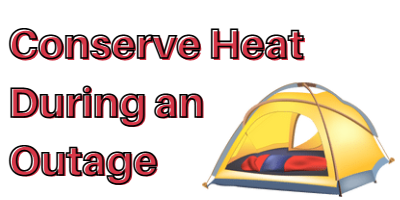
Prepare for a Winter Power Outage
Winter power outages can be caused by a variety of factors, including heavy snowfall, ice storms, and strong winds. These outages can disrupt daily life and make it difficult to stay warm and safe. Here are some ways you can prepare for a winter power outage:
-
Make an emergency kit: Keep a kit stocked with supplies in case you lose power or need to evacuate your home. Your kit should include non-perishable food, water, flashlights, a radio, extra batteries, and a first-aid kit.
-
Have an alternative heating source: If you rely on electricity to heat your home, it's important to have a backup plan in case of a power outage. This could include a wood stove, fireplace, or portable heater. Make sure to follow proper safety guidelines when using alternative heating sources.
-
Insulate your home: To help keep your home warm during a power outage, make sure it is properly insulated. This includes sealing windows and doors, and adding weather stripping to help keep out drafts.
-
Keep your car ready: Make sure your car is winterized and has a full tank of gas. Keep a winter emergency kit in your car, including a blanket, extra warm clothing, and a flashlight.
-
Stay informed: Keep track of weather forecasts and updates from local authorities. If a power outage is likely, make sure to charge your phone and other electronic devices beforehand.
By following these steps, you can be better prepared for a winter power outage and stay safe during this potentially disruptive and dangerous situation.
Prepare for a Winter Storm
Winter storms can bring a range of weather conditions, including heavy snowfall, freezing rain, and strong winds. These storms can be dangerous and disrupt daily life, so it's important to be prepared. Here are some ways you can prepare for a winter storm:
-
Make an emergency kit: Keep a kit stocked with supplies in case you lose power or need to evacuate your home. Your kit should include non-perishable food, water, flashlights, a radio, extra batteries, and a first-aid kit.
-
Stock up on supplies: Before a storm hits, make sure you have enough supplies to last a few days. This includes food, water, and any medications you may need. It's also a good idea to have extra blankets, warm clothing, and a heating source on hand.
-
Know your evacuation routes: If you live in an area prone to flooding or other weather-related hazards, make sure you know how to safely evacuate your home.
-
Protect your pipes: To prevent your pipes from freezing and bursting, insulate them and keep your thermostat set to a consistent temperature. If you're going to be away from home for an extended period of time, make sure to shut off the water supply and drain the pipes.
-
Keep your car ready: Make sure your car is winterized and has a full tank of gas. Keep a winter emergency kit in your car, including a blanket, extra warm clothing, and a flashlight.
-
Stay informed: Keep track of weather forecasts and updates from local authorities. If a storm is coming, follow any evacuation orders or other emergency instructions.
By following these steps, you can be better prepared to weather a winter storm and stay safe during dangerous weather conditions.

